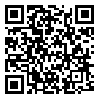Volume 10, Issue 3 (Fall 2006)
Physiol Pharmacol 2006, 10(3): 211-217 |
Back to browse issues page
Download citation:
BibTeX | RIS | EndNote | Medlars | ProCite | Reference Manager | RefWorks
Send citation to:



BibTeX | RIS | EndNote | Medlars | ProCite | Reference Manager | RefWorks
Send citation to:
Khakpay F, Rostami P, Pilevarian A. The effects of testosterone and naloxone treatments on fear behavior in gonadectomized rats . Physiol Pharmacol 2006; 10 (3) :211-217
URL: http://ppj.phypha.ir/article-1-276-en.html
URL: http://ppj.phypha.ir/article-1-276-en.html
Abstract: (12269 Views)
Introduction: Effective perception of fear signals is crucial for organism survival. When
threated, the organism indicates defensive behaviors.
Methods: Elevated plus–maze has high efficiency for measurement of fear behavior and
is widly used for fear behavior determination. Increase in two parameters percent of openarm
entries (%OAE) and percent of time spent in the open-arm (%OAT) in the elevated
plus- maze were considered as the indexes of fear reduction effect. In this study, the effect
of testosterone and naloxone on fear behavior of gonadectomized rats (GDX) was
investigated. Also, the interaction of testosterone with naloxone was investigated.
Results: Subcutaneous (SC) injections of different doses of testosterone (100, 200, 300,
450 μg /rat) increased the %OAE and %OAT in a dose dependent manner. Maximum
response was obtained by 450 μg/rat dose of testosterone (P<0.001). SC injections of opioid
receptors antagonist, naloxone 1, 2.5, 5, 7.5 mg / kg reduced %OAE and %OAT (P<0.01) .
Conclusion: It may be concluded that testosterone decreases fear behavior and naloxone
increased fear behavior. Also the results indicate that there is an interaction between
testosteone and naloxone (P<0.001).
Type of Manuscript: Experimental research article |
| Rights and permissions | |
 |
This work is licensed under a Creative Commons Attribution-NonCommercial 4.0 International License. |





